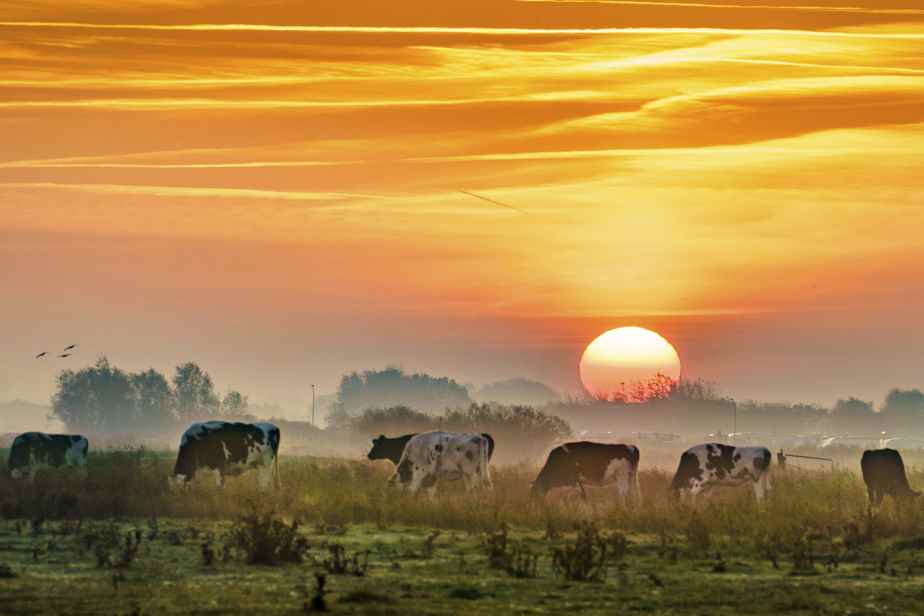Posted at 5:00 a.m.
“An exceptional increase”
In his most recent Greenhouse Gas Bulletin (Greenhouse Gas Bulletin), the World Meteorological Organization (WMO) reports that the concentration of methane in the atmosphere experienced “an exceptional increase” in 2021, totaling 1908 parts per billion. Since 1983, this indicator has increased by 16%. Methane, remember, is the second most important greenhouse gas after carbon. This gas has been responsible for about 30% of global warming since pre-industrial times. Although its lifetime in the atmosphere is much shorter, its warming potential is significantly higher than CO2. Over a 20-year period, its warming effect is 80 times greater than carbon.
Reduce human-made emissions
The sources of methane emissions are both natural (40%) and anthropogenic, that is to say of human origin (60%). The WMO report reiterates the importance of tackling emissions caused by human activities. The fossil fuel industry contributes about 20% of methane emissions globally. “Reducing these emissions [de méthane] could also reduce CO emissions2 “, says the report. Agriculture accounts for around 30% of man-made methane emissions. These come largely from manure and gastrointestinal waste from cattle. In its latest report, the Intergovernmental Panel on Climate Change (IPCC) reaffirmed the importance of giving more importance to vegetable proteins in our diet in order to reduce animal production on a global scale. planetary. NASA revealed on Tuesday that it had detected dozens of methane “super-emitters” from space. Sites generally linked to the fossil fuels, waste treatment or agriculture sectors.
A new record for CO2

CO concentration2 in the atmosphere also reached a record level in 2021, at 415.7 parts per million (ppm), notes the WMO. The organisation’s secretary general, Petteri Taalas, recalled that “the absolute priority is to drastically and urgently reduce emissions of carbon dioxide, which are the main culprits of climate change and the extreme weather phenomena associated with it. “. The most recent reading from the Mauna Loa Observatory in Hawaii was 415.67 ppm on Tuesday.
Disappearing carbon sinks
Between 2011 and 2020, about 48% of man-made carbon emissions accumulated in the atmosphere, 26% in the oceans and 29% in the terrestrial biosphere. “There is concern that terrestrial ecosystems and the oceans will be less efficient in their function of “sink”, which would reduce their capacity to absorb carbon dioxide and prevent a more marked rise in temperature”, underlines the WMO, which notes that in certain regions of the world the sinks of CO2 become sources of gas. This is particularly the case of the Amazon rainforest, which now rejects more carbon than it captures, revealed a study published in Nature in 2021. Deforestation and agriculture are the main causes of this turnaround.
2.5 degrees by the end of the century
A second report published this time by the United Nations Climate Agency on Wednesday recalls that the latest international climate commitments are “very far” from meeting the Paris Agreement objective of limiting global warming to 1.5 degrees by the end of the century. The current level of effort would instead lead to a warming of around 2.5 degrees, the report points out. By 2030, GHG emissions are expected to increase by 10.6% compared to 2010 levels. According to the IPCC, these should instead decrease by 45% by the end of the decade compared to 2019 levels. Two weeks before COP27, to be held in Egypt, the UN says only 24 nations have provided new climate plans since those tabled at COP26 last year.
Watch out for methane
It is important to remember that the concentrations of CO2 and methane in the atmosphere are the real indicators of the efforts in the fight against climate change. “The World Meteorological Organization report is always an extremely strong report,” notes Eddy Perez, director of climate diplomacy at the Climate Action Network. Of particular concern, he said, is the “dangerous” rise in methane concentrations. “Any activity that risks increasing these emissions will make us vulnerable in the coming years,” he explains.
With Agence France-Presse
Learn more
-
- 149%
- Increase in carbon concentration in the atmosphere since the pre-industrial era
Source: World Meteorological Organization
- 262%
- Increase in the concentration of methane in the atmosphere since the pre-industrial era
Source: World Meteorological Organization

